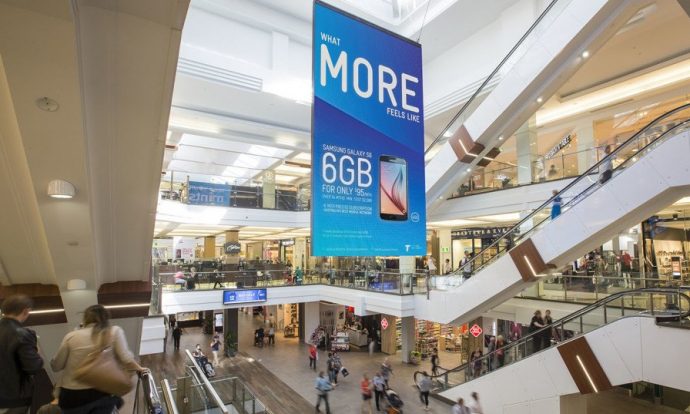
The Near-Future Of Digital Billboards And Posters Is Programmatic
September 21, 2016 by guest author, Emily Ingram

Guest Post: Brett Farley, NanoLumens
Out Of Home (OOH) advertising has exploded with the implementation of digital technology, with nearly 62% of all OOH advertising now done using digitally-enabled displays. In 2010, digital content delivery made up just 9% of total OOH revenue.

Brett Farley
Companies are now switching out older static networks with digital media because the content can be changed quickly and remotely. No matter if the companies controlling the displays are media companies exclusively devoted to OOH advertising, or property owners creating a second stream of revenue for themselves, those in the OOH industry are getting increasingly sophisticated at recognizing their audiences.
More and more tools are becoming available that will help media owners identify who is looking at their digital displays, what content is causing them to look, and how to best interact with the viewer. These tools can interact with mobile devices, even recognizing drive time and automobiles.
With all of the rapid advances in technology, the digital advertising industry is looking to create a standard on how to place a value to particular OOH advertising faces.
Creating a Common Standard
Many national and regional OOH advertising communities are striving to create a common currency with which to talk about the value of a particular OOH surface.
Australia is on the forefront of creating a common standard in DOOH. Historically, the standard in OOH has been the same as in older traditional advertising – CPM-based (cost per thousand impressions) which charged advertisers for the number of individuals assumed to be exposed to an advertisement at any given location.
In Australia, however, advertisers have adopted a value called MOVE, which measures the outdoor visibility for audience measurement systems and exposure. MOVE measures, evaluates, and analyzes the audiences passing a specific display and assigns a value to it. MOVE also takes into account the display’s location, and assigns a higher score to a busy intersection in an affluent part of a city than it does to an intersection in a small town.
In Australia, they call this value “Likelihood to See” or LTS. MOVE allows the media owner to charge a premium for displays with a higher score and less for displays with a lower score.
Because there are so many different standards and methods that can be applied in measuring the value of advertising space, MOVE has been universally adopted in Australia in order to level the playing field and provide a common standard.
The Next Generation for DOOH
The next evolution for the DOOH industry in Australia is the Automatic Transaction Platform (ATP). This programmatic-esque advertising platform will be managed via a software platform. It helps automate the decision-making process of media buying by targeting specific audiences and demographics.
Today’s advertisers are demanding an ROI approach to marketing, and instead of buying a location and a number of impressions, they are increasingly looking to buy an audience with solid demographics, psychographics and propensities towards actionable interests.
The ROI calculation for a particular location would be based on a set of demographic and psychographic data, aggregated from the various media locations, via audience recognition tools. These tools include everything from geo-fencing and beacons that trigger interactions with the SDK of mobile devices, to facial recognition, and even propensity to spend based on average number of conversions. The real value to advertisers comes from the information the owners of the display can provide on the back-end, through audience analytics.
What Does the Future Hold?
A number of industry-leading media companies and other organizations are rapidly trying to put together a usable programmatic buying platform for advertisers in order to truly automate the buying process; but they’re not there yet. Much of what is being touted as “programmatic” in the DOOH world are instead platforms which automate some of the buying process – they are not like the programmatic version that advertisers are used to in the web and mobile world; they are missing much of the audience analytics.
That said, advancements in audience detection, measurement and preferences which are integrated into content delivery hardware solutions today, are positioning themselves to better deliver this data in order to feed the qualitative side of programmatic buying. But, most OOH spend is still based on media asset location, not the location-agnostic impressions and audience demographic information that define programmatic buying.
Today, adjustments and changes are happening rapidly. The adoption of a common standard in measuring digital advertising locations and faces will no doubt happen within the next three years here in the U.S. And, while the timeline for fully implementing programmatic advertising is a bit unclear, it’s likely ATP will also become a reality within three to five years.
These rapid advances in technology are quickly changing the conversation for digital display manufacturers from talking about vibrant colors to increasing dwell time, likelihood to see, and the ability to change content and manage it on the fly.



I am curious to see how billboards and posters evolve further. Automating the buying process sounds like it would be very helpful. Thanks for sharing.